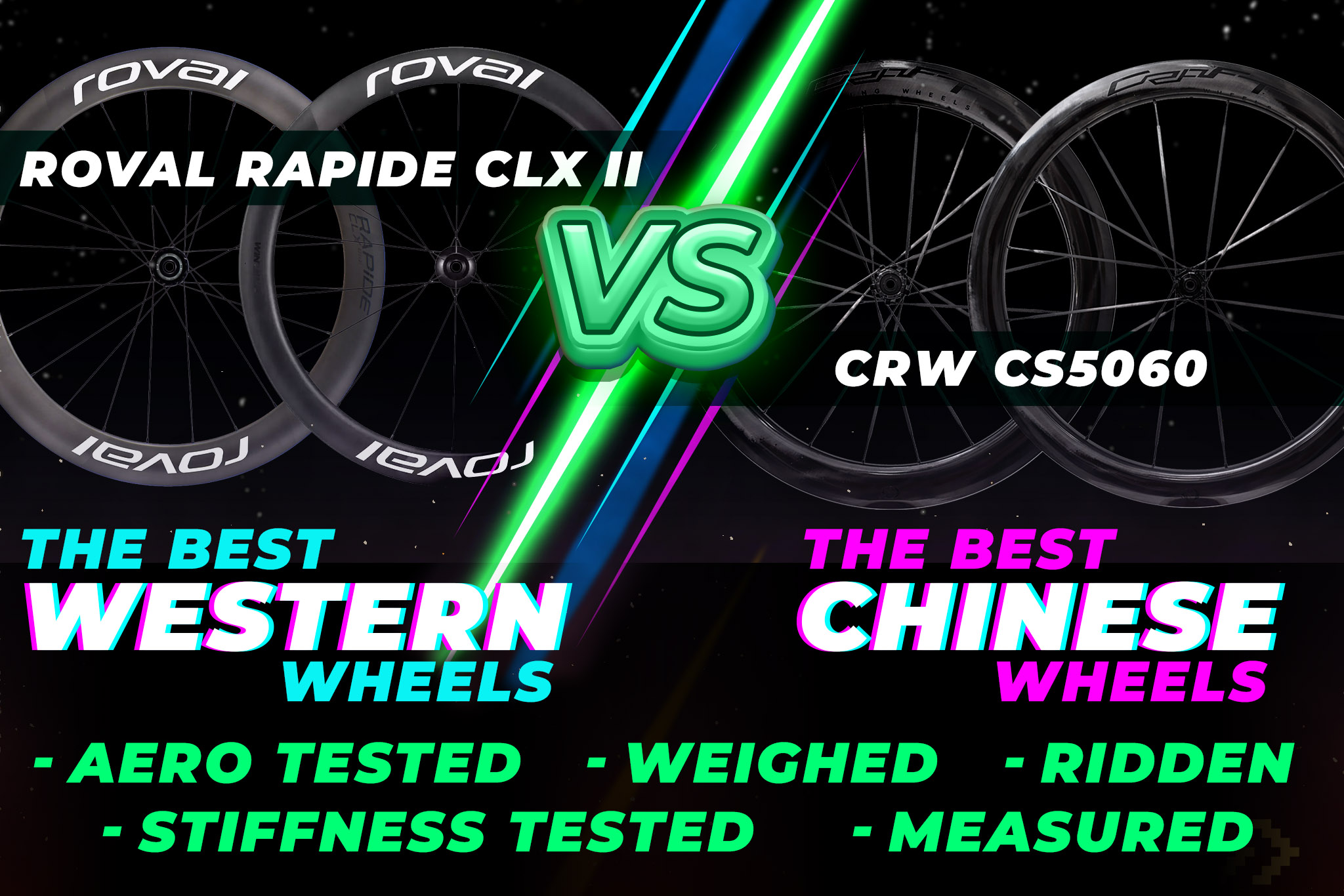
I tested the best Western wheels Vs the best Chinese wheels: Roval Rapide CLX II Vs CRW CS5060
Joe Whittingham2025-07-09T07:34:45+00:00Introduction
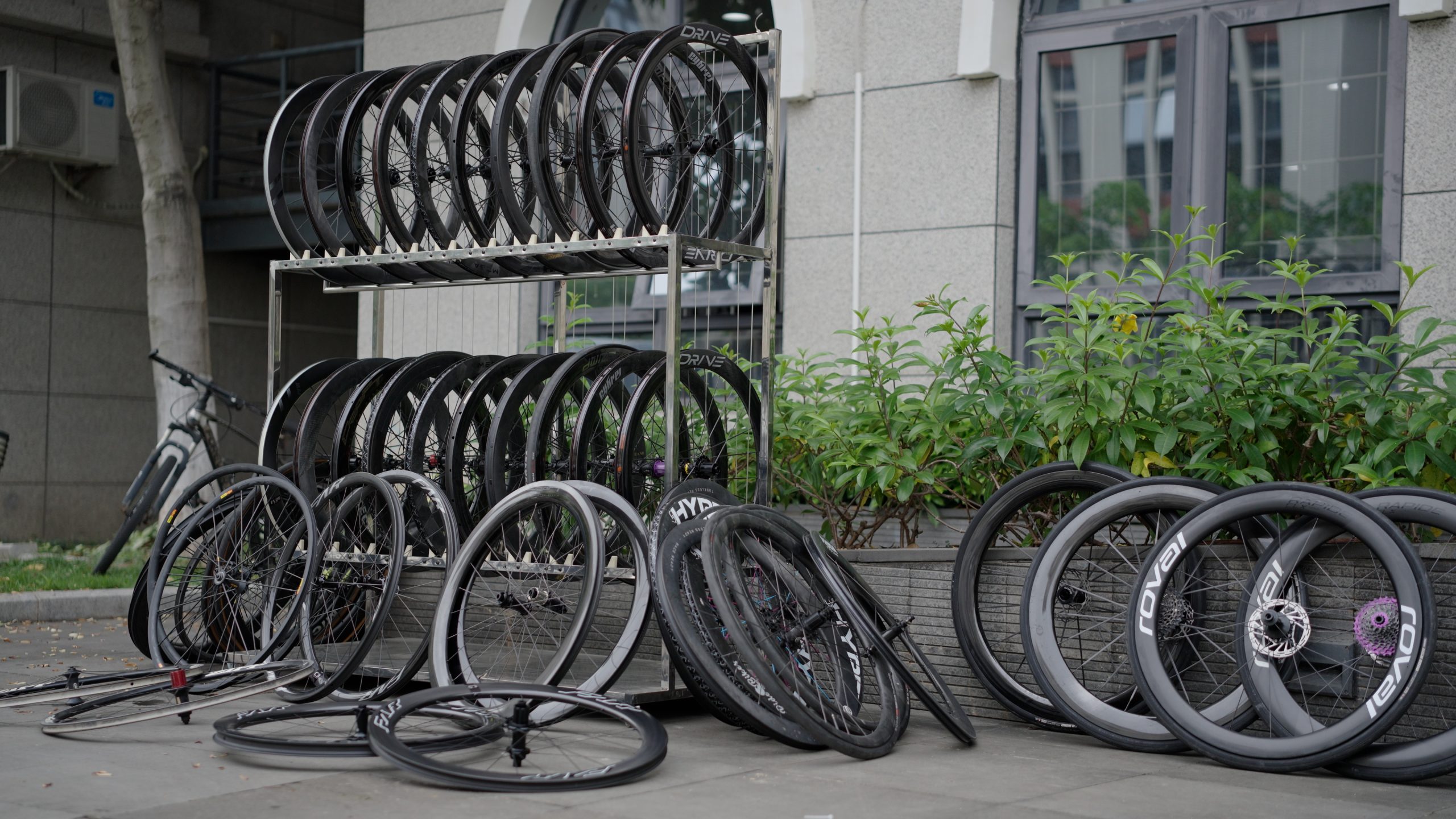
We’re putting the best Western wheels head to head against the best Chinese wheels in a direct shoot out. We’re going to be looking at the price, weight, stiffness and aerodynamics of these two great wheelsets. In the blue corner, representing the best of the west, we have the Roval Rapide CLX II – The CLX wheelsets have more victories in the world tour than any other wheelset and have been raced by the greats from Peter Sagan to Julian Alaphilippe. In the red corner, representing China are the CRW CS5060 wheels. While not sharing the same impressive palmarès as the Rovals, the CRWs are packing in the technology department; carbon spokes and the latest in carbon layup technology in the rims to deliver an ultralight wheelset thats over 200g lighter than the Rovals.
Table of contents:
Battle of the mid-depth wheelsets
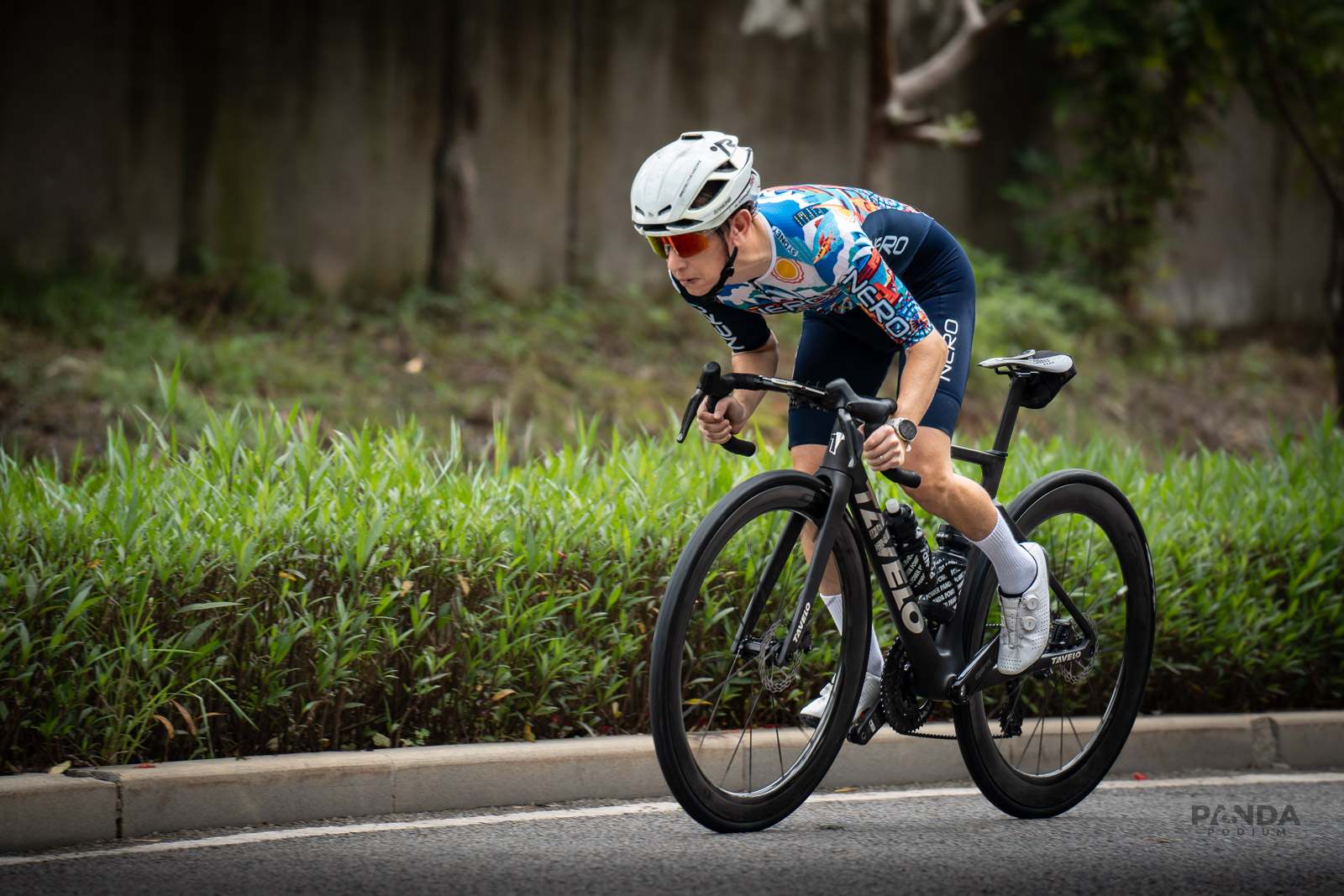
Both wheels offer similar rim profiles, both sharing a front rim depth of around 50mm and 60mm at the rear. This staggered setup allows for more crosswind stability at the front of the bike while building the rear for better power transfer and aerodynamics. Both wheels are also on the cutting edge of the latest trends for wider and wider wheels, both wheels feature very “fat” front rims with external widths around 35mm and “skinny” rear wheels with external widths around 30mm. This setup is a great option for all-round riding. Being deep enough to get most of the aero benefits, light enough to climb well and not so deep that crosswinds become an issue.
Weights
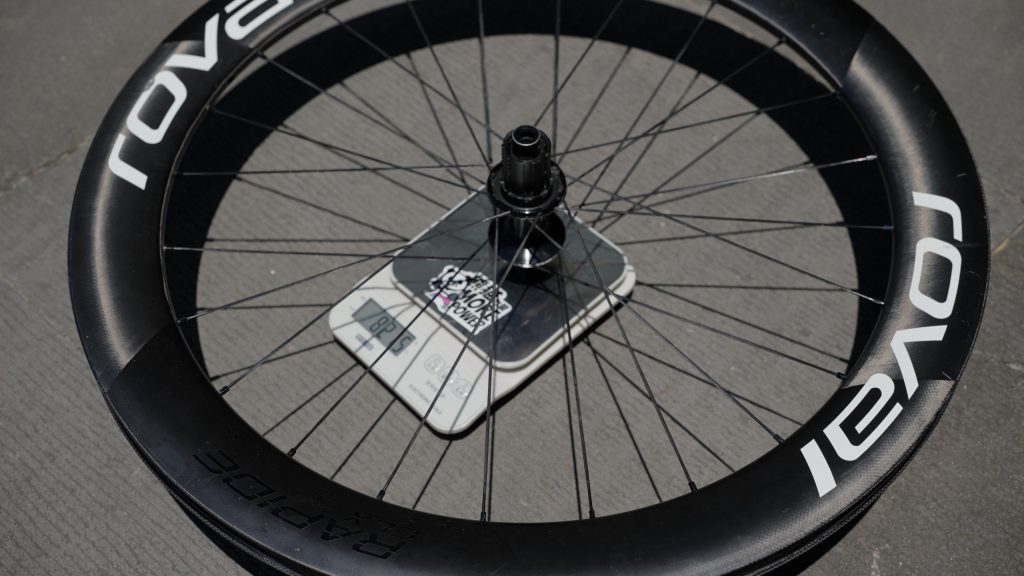
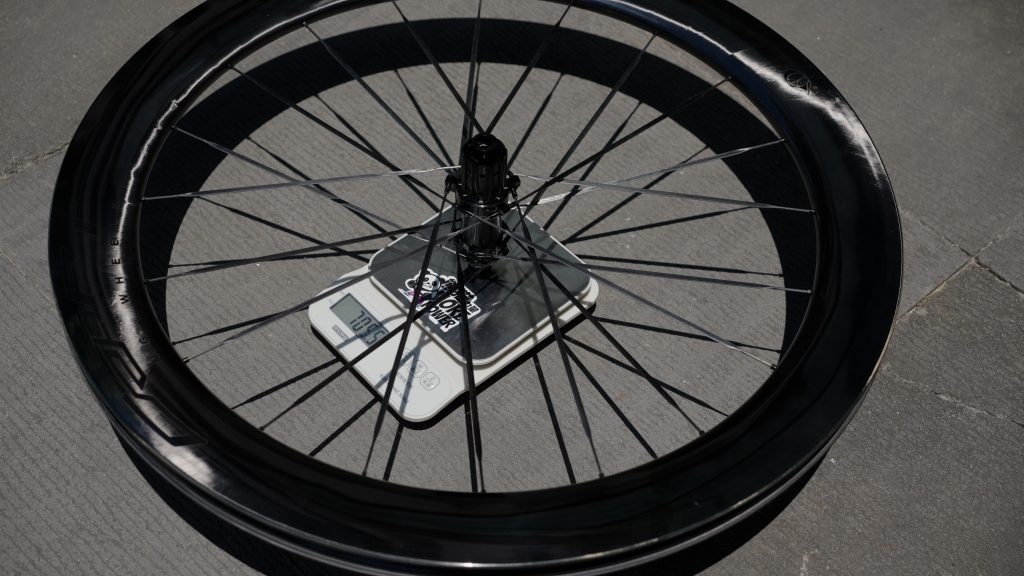
| All units in grams | Roval Rapide CLX II | CRW CS5060 | Difference |
| Official Weight (Pair) | 1520 | 1290 | 230 |
| Tested Front Wheel | 700.0 | 600.0 | 100.0 |
| Tested Rear Wheel | 821.5 | 708.0 | 113.5 |
| Tested Weight (Pair) | 1521.5 | 1308 | 213.5 |
While 1520g for a 50/60mm disc brake wheelset was impressive a few years ago, times have moved on. The Roval Rapide CLX II tipped our scales at 1521.5g including rim tape. The CRW CS5060 however are in a league of their own tipping our scales at 1308.0g including rim tape. A difference of 216g in favor of the CRWs. Weight is obviously a huge factor to any cyclist, but especially rotating weight. The difference between the two wheels is especially noticeable when performing sudden accelerations or on gradients of 5% or above. As a side note, the previous version of the Roval Rapide CLX were actually around 100g lighter than the 2nd generation, but were not tubeless compatible. Tubeless can put stresses on a rim that regular clinchers don’t (due to the tight fitting bead, and other reasons) as such, the 2nd generation reviewed here got 100g heavier in order to become tubeless compatible. It is rumored that some pro tour riders still use the 1st generation with clincher tires on hillier days.
Stiffness / Compliance
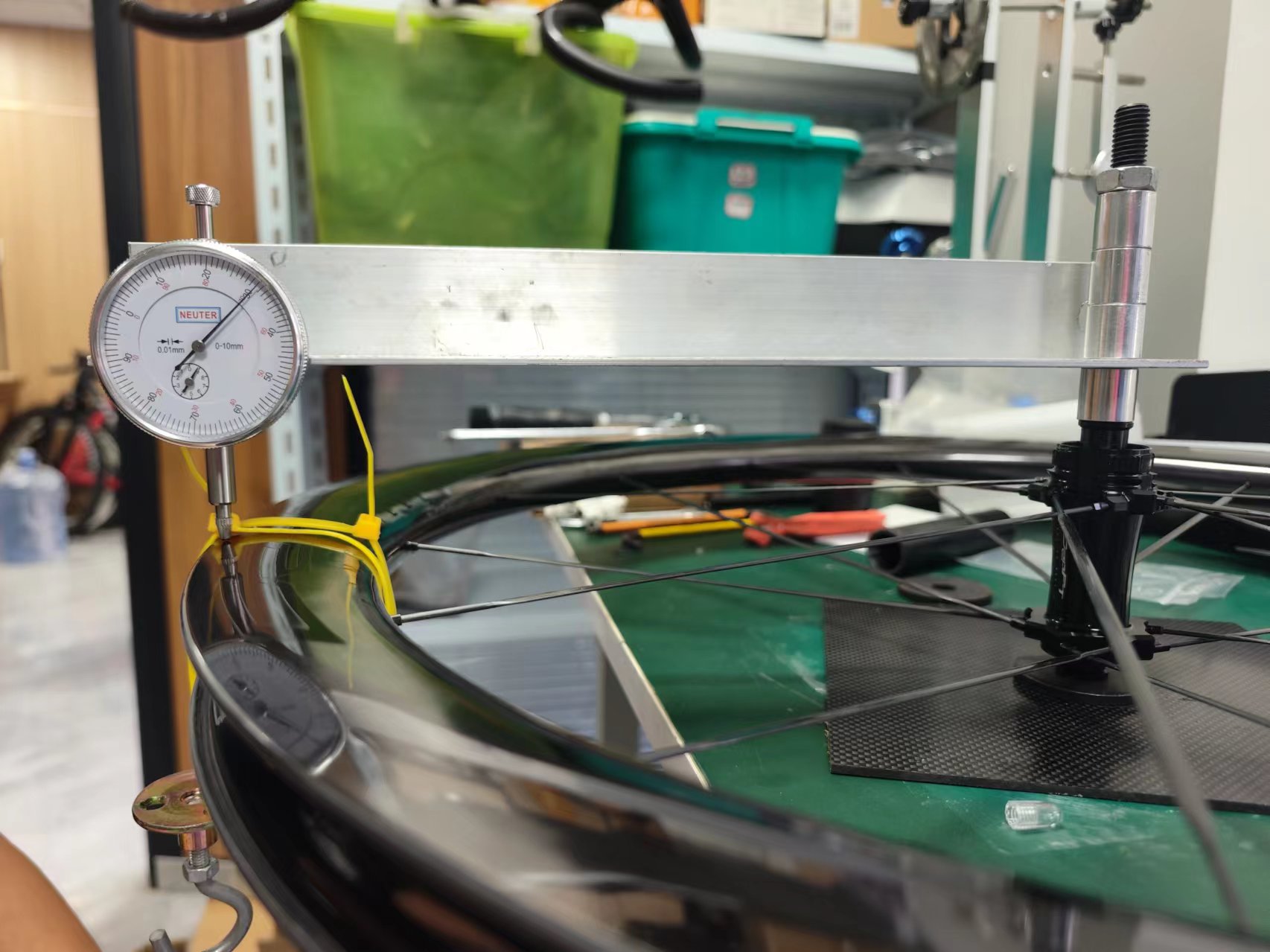
| All units in N/mm | Roval Rapide CLX II | CRW CS5060 | Difference |
| Front Wheel (DS) | 42.42 | 45.71 | 3.29 |
| Front Wheel (NDS) | 44.34 | 38.90 | 5.44 |
| Rear Wheel (DS) | 72.20 | 40.64 | 31.56 |
| Rear WHeel (NDS) | 66.18 | 54.3 | 11.88 |
| Average | 56.26 | 44.89 | 11.37 |
The balance between stiffness and compliance for a wheelset is always a tricky one. Roval have an especially difficult task, as their wheels come standard on many of their top-of-the-line bikes that are purchased by riders with a wide range of power and body weight profiles. They have to design wheels that can be raced by Alaphilippe at the top end of the sport, yet still ridden by 120kg weekend warriors. We tested the lateral stiffness of the two wheelsets in our lab, on average the Rovals were 25.3% stiffer than the CRWs, likely attributed to the greater number of spokes, larger flanges and the weight / stiffness of the rim. However, this is just lateral stiffness, and doesn’t represent the wheels ability to transfer power (torsional stiffness.) The most impressive aspect of the Rovals is the balance between drive side and non-drive side stiffness. This can likely be attributed to the 2:1 spoke lacing. However, this design is not without its disadvantages. While the CRWs only have 16 front spokes, 8 of those spokes are essentially able to transfer braking forces, whereas the Rovals feature 18 spokes on the front wheel, only 6 of these are able to transfer any reasonable amount of braking force (Due to 2:1 spoke lacing and the drive side being fully radially laced.)* With the CRWs having a further advantage that carbon spokes have a higher tensile strength than the Roval’s steel spokes, the CRWs should have much higher torsional stiffness under braking. Again, like all stiffness figures, stiffer does not necessarily mean better.
*Upon peer review, it was stated by a PhD much cleverer than me, that both spokes in compression and tension are able to transfer the braking force. This would mean the Roval has 12 spokes transferring forces compared to CRWs 16. But, the point remains that CRW has more spokes to transfer braking forces.
Aero Performance
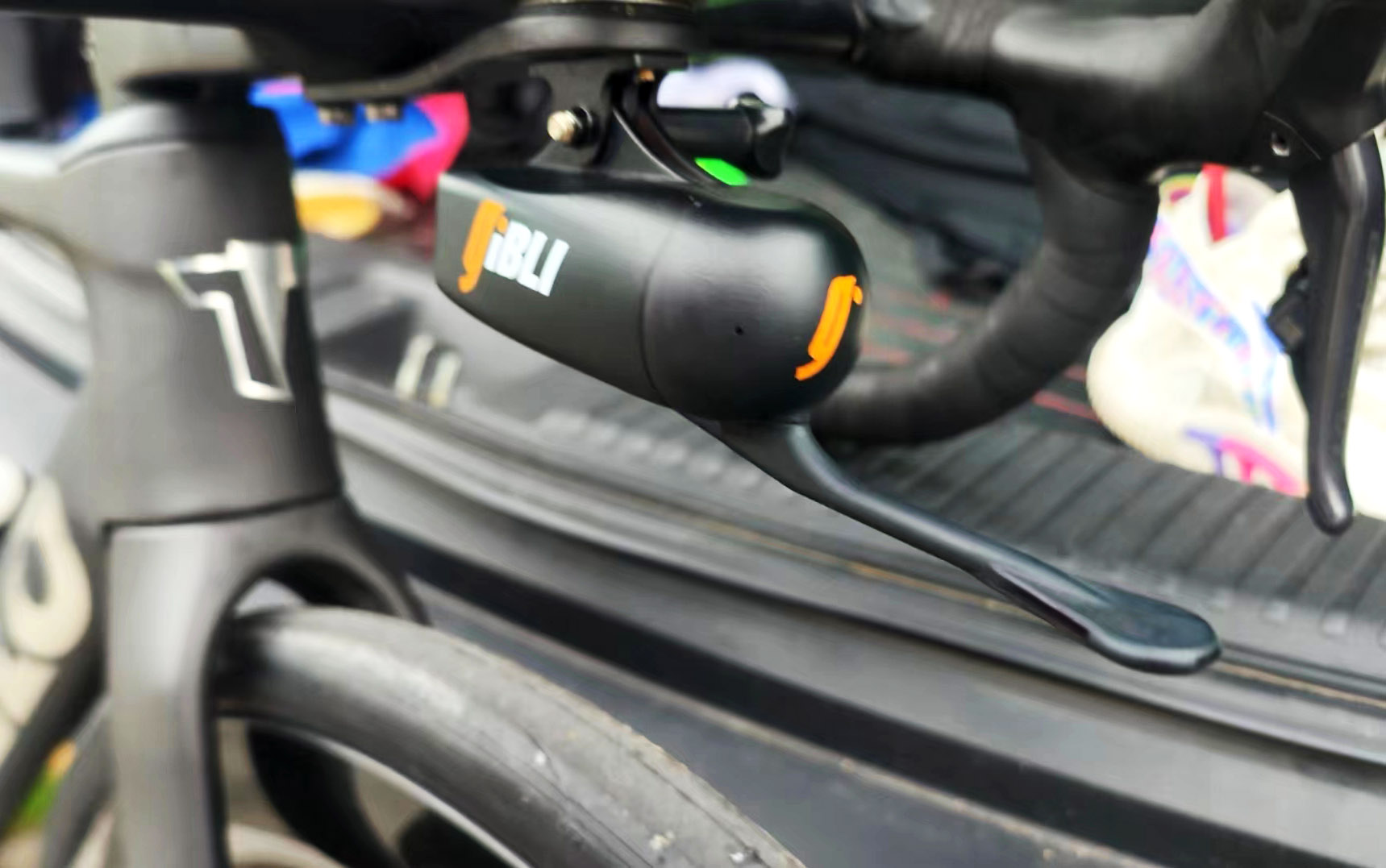
| Average Power (w) | Average Speed (kph) | Crosswind (degrees) | Head / Tailwind (kph) | CdA (m²) | Watts for 40kph (w) | |
| CRW CS Test 1 | 190 | 35.2 | 2.0 | 0.2 | 0.277 | 261 |
| Roval CLX Test 2 | 190 | 35.2 | 1.3 | 0.3 | 0.275 | 260 |
| Roval CLX Test 3 | 190 | 35.5 | 1.3 | 0.1 | 0.273 | 258 |
| CRW CS Test 4 | 191 | 35.5 | 1.5 | 0.1 | 0.274 | 259 |
| Roval Rapide CLX II (2 run average) | 0.2740 | 259 | ||||
| CRW CS5060 (2 run average) | 0.2755 | 260 | ||||
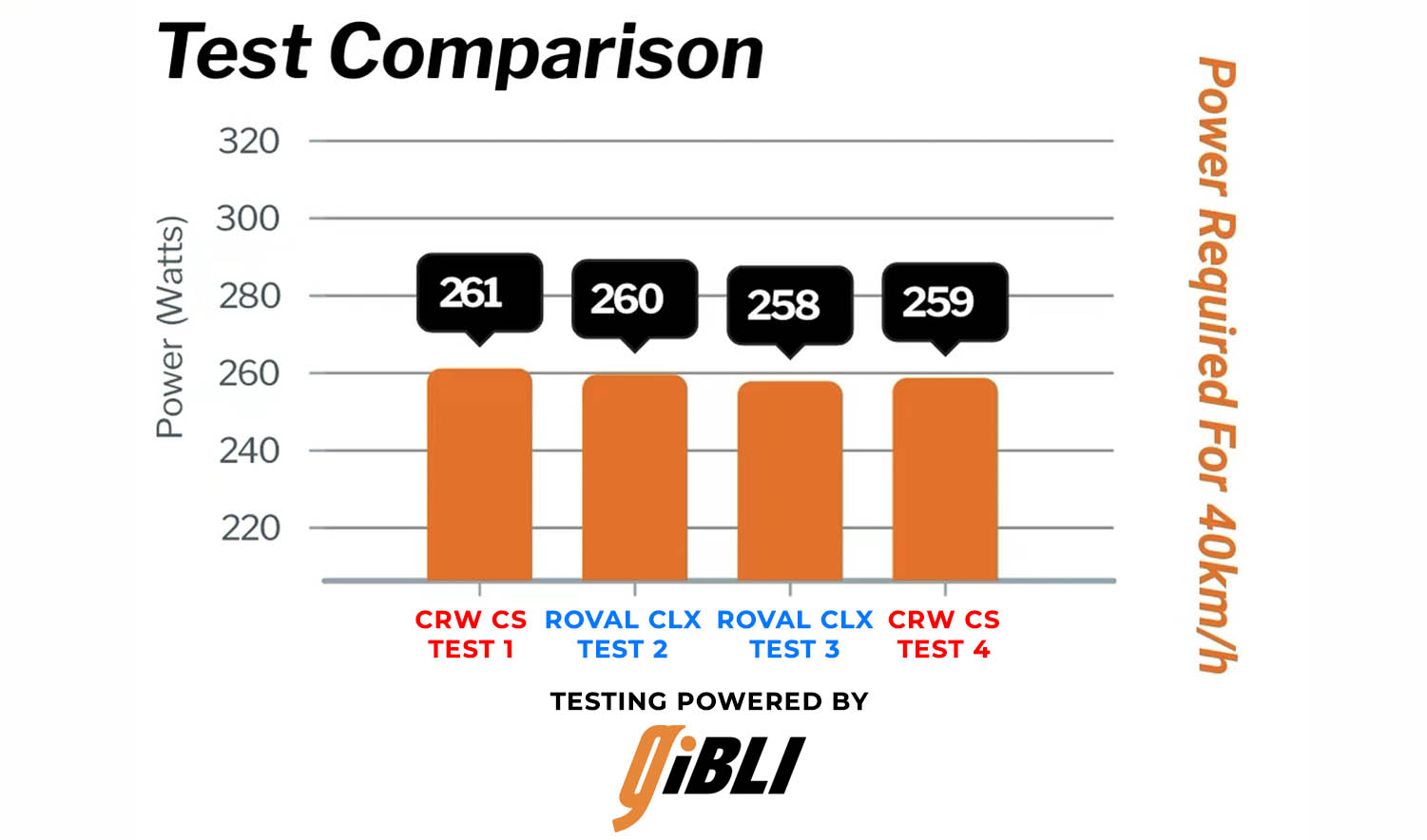
Aero testing was carried out using the Gibili aero sensor. Both wheels were fitted with MAXXIS High Road tires in 28mm with Ridenow TPU innertubes. All tires were inflated to 70psi as the testing surface is a very smooth road. Cassette and rotors were identical sizes. All 4 tests were conducted back to back after a few warm up runs. The end result? The Roval Rapide CLX II tested one watt faster than the CRW CS5060s. This result is no doubt within the margin for error of the experiment (it’s already outside the rated accuracy of the Favero Assioma power meter pedals that were used) however, it’s reasonable to conclude that the two wheels have essentially the same aero performance, with the Rovals having recording a marginal advantage.
Rim Profiles
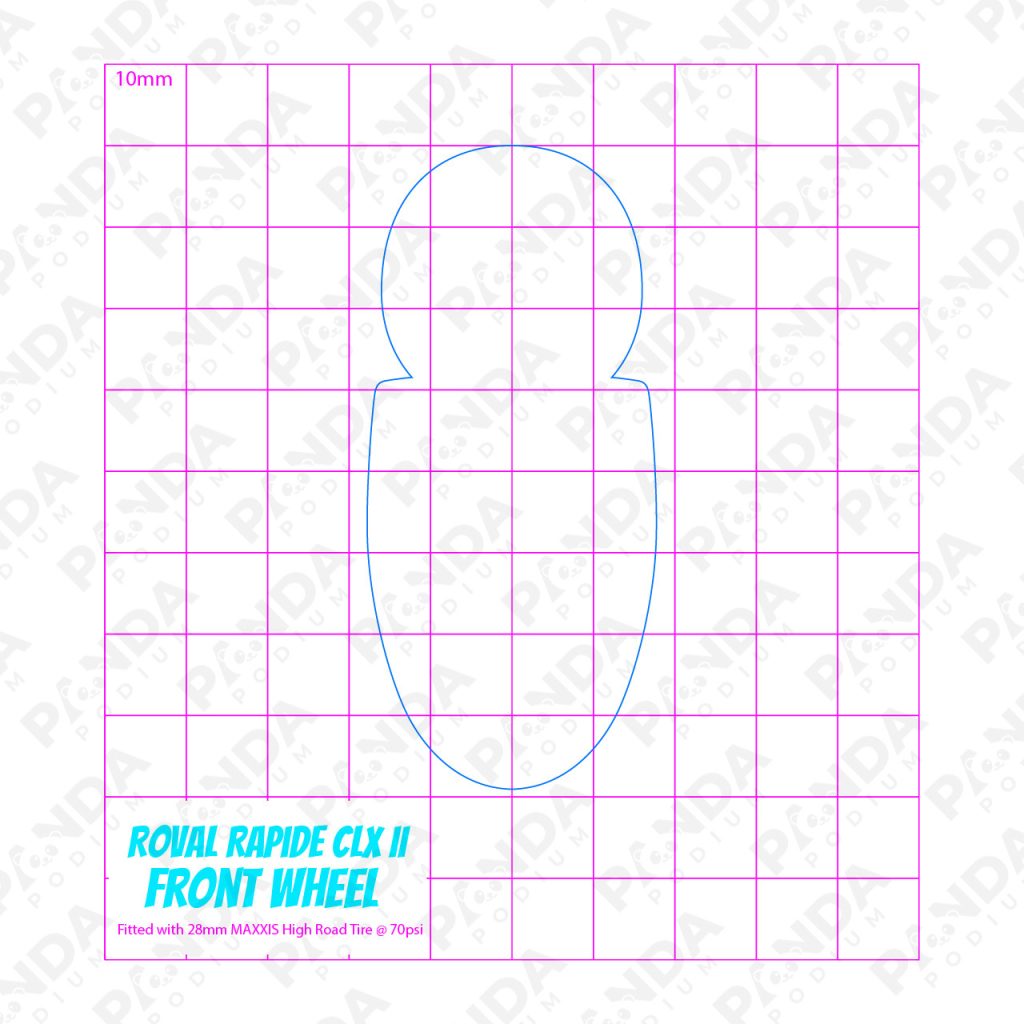
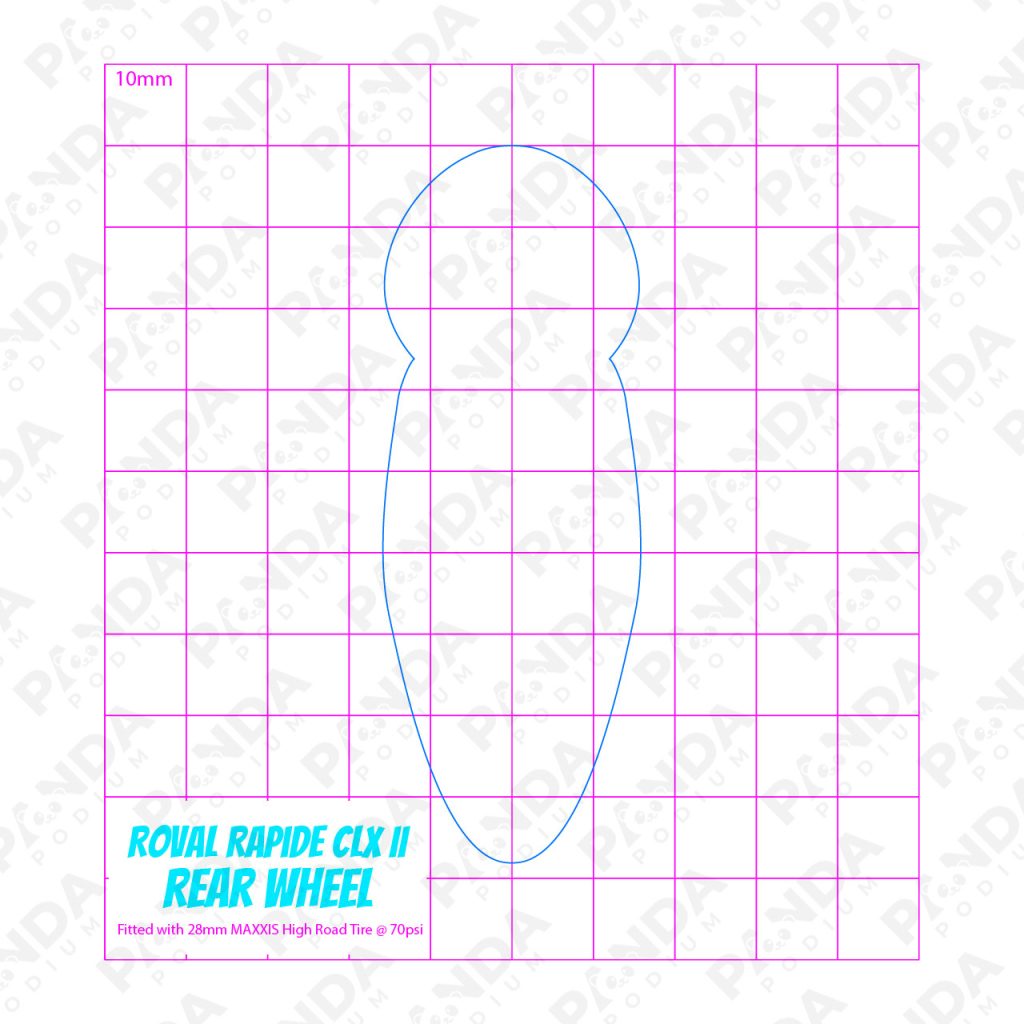
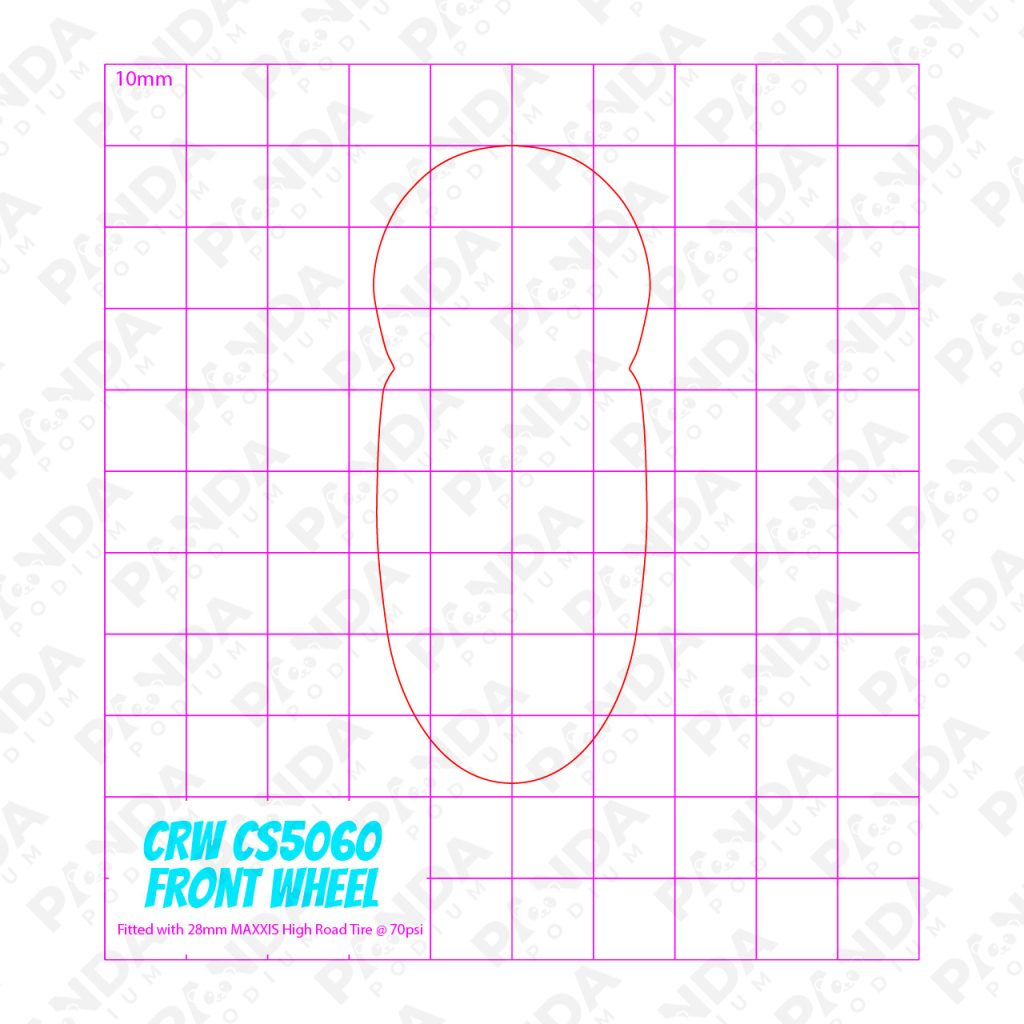
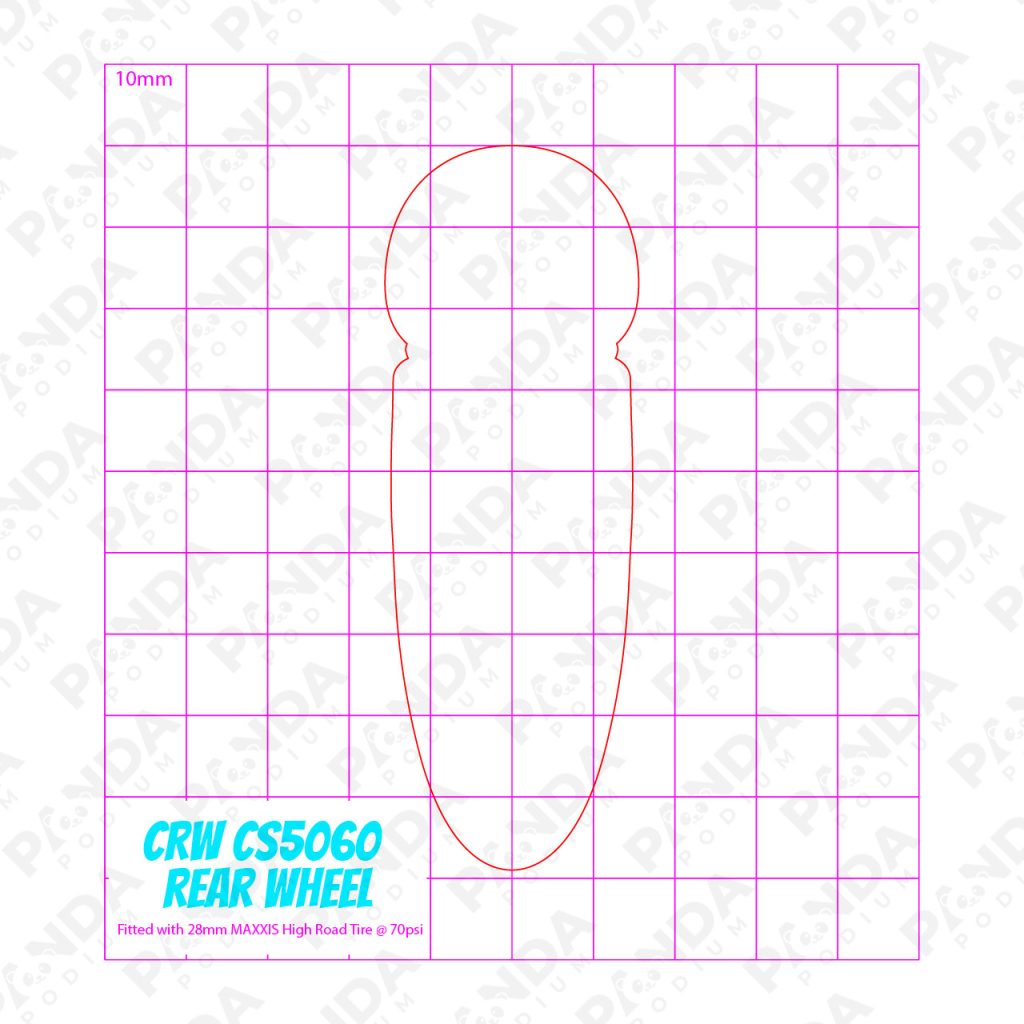
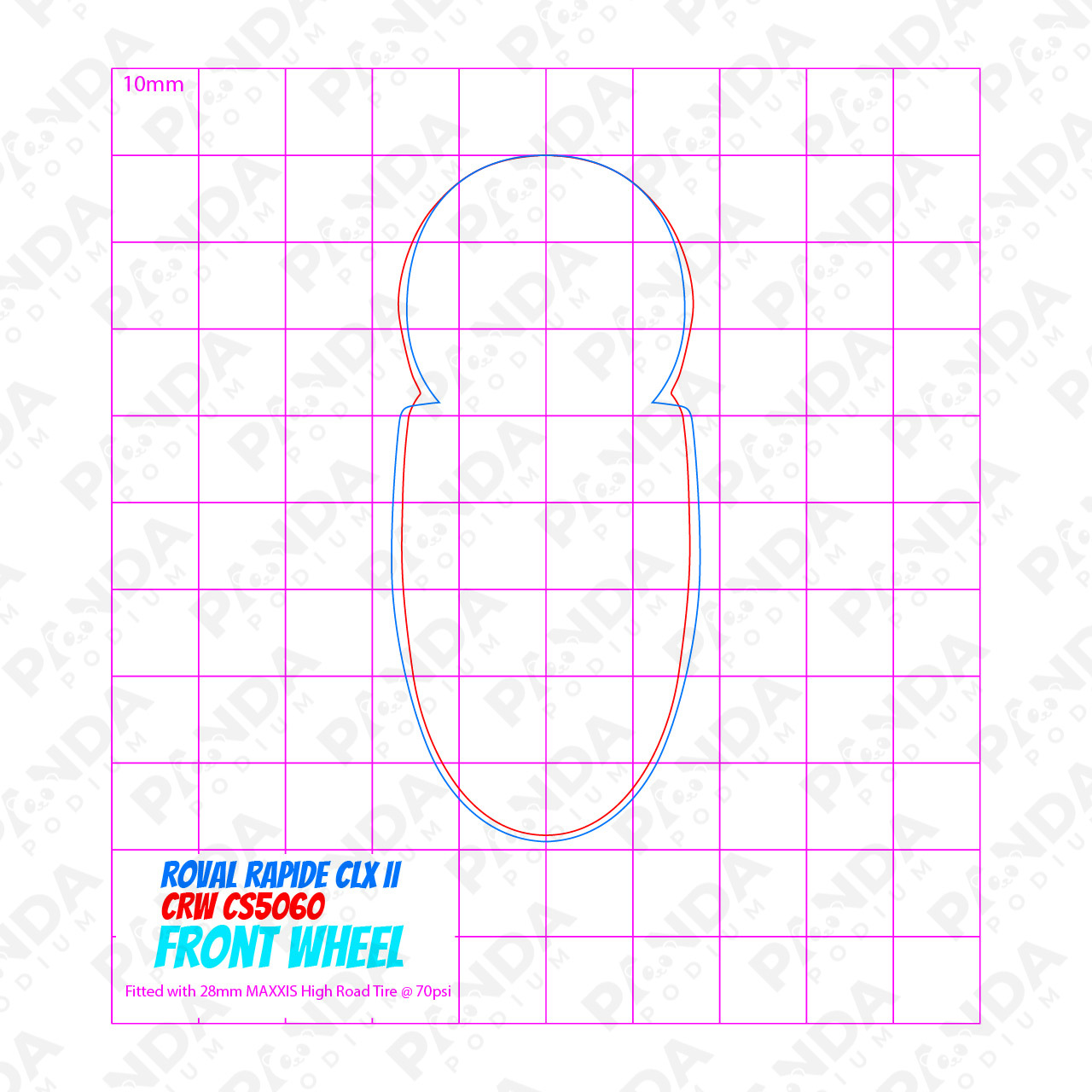
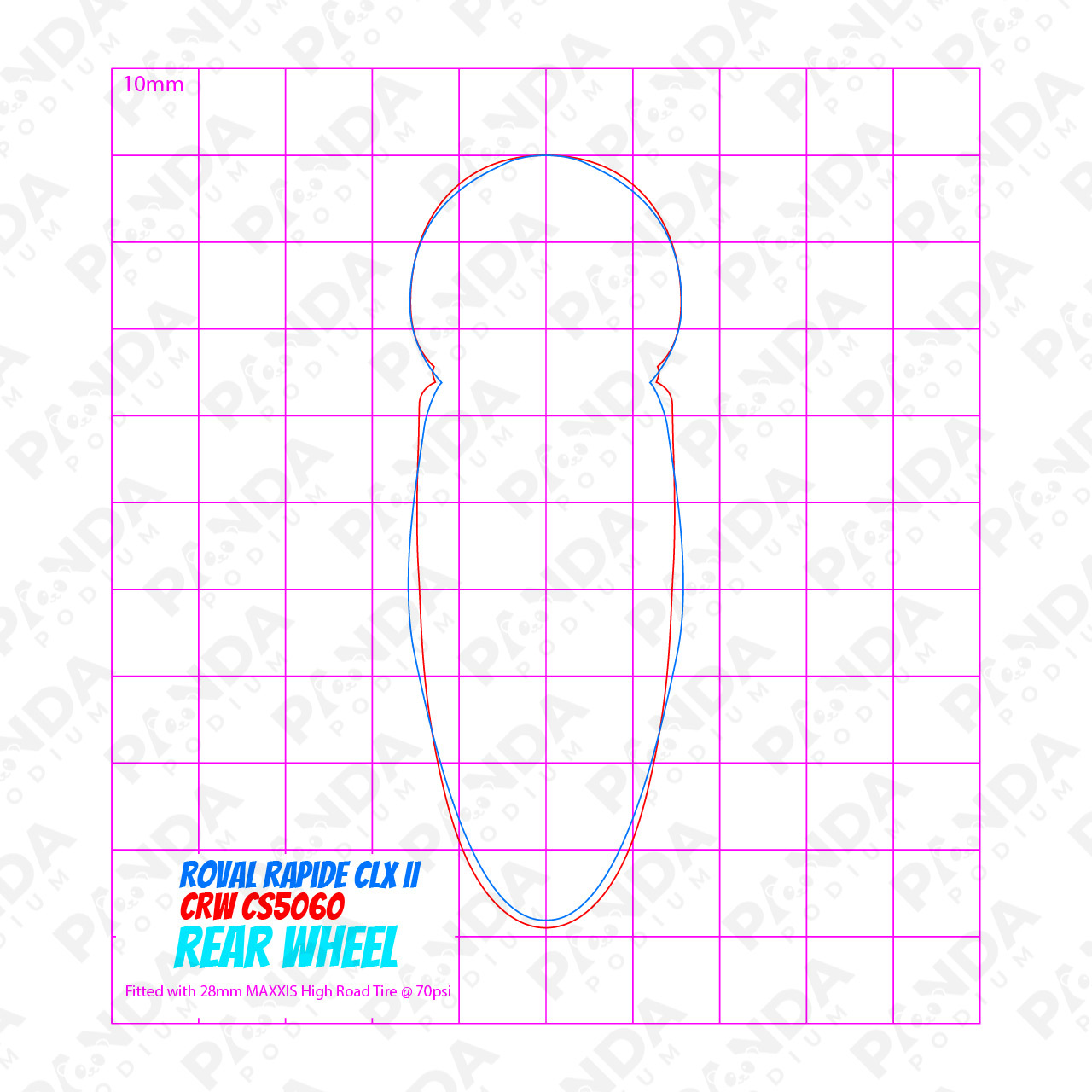
While the rims look similar, there are subtle differences to their design and execution. Starting with the front wheel, the biggest difference is the hooks of the Rovals. They measure around 6mm thick, which results in a large “shoulder” of the rim at the tire/rim interface. The Roval’s rear wheel has a hook diameter of just 3mm, so this 6mm shoulder is obviously intentional. The question is, did they do it in order to keep a lower internal width and higher compatibility with more tires, or, is it some sort of clever air-tripping mechanism. Knowing Specialized, I’m led to believe it’s an intentional design for the sake of aerodynamics. I’m fast getting out of my depths here, but my belief is that (especially in crosswinds) this shoulder helps to trip the air on the back side of the wheel, causing earlier separation of the air from the rim during higher yaw angles, so that there isn’t such a sudden stall when the AoA becomes too great. Put simply; I think it may slow the wheel down at low yaw angles, but speed the wheel up and add stability at greater stall angles. The CRW on the other hand opts for a more streamlined transition between the tire and rim. The rest of the front profiles are fairly similar, with the Rovals being a bit wider around the mid-section with a slightly more aggressive turn inwards.
Moving onto the rear rims, the difference is less apparent. This time the Rovals have a smaller hook width than the CRWs giving the CRWs more of a shoulder. The rest of the rear profiles are also fairly different between the two. The widest point of the Rovals is a lot further down the rim than the CRWs, possibly to optimize the rim for performance on the trailing edge. I suspect each rim has it’s peak performance at different wind speeds / angles. Which one is quicker for you on most of your riding conditions…? Who knows. Our above aero testing at 35kph in moderate wind conditions suggests that there’s not much real-world difference between the two. However, this is credit to the Rovals, as they have many more spokes than the CRWs. So, to provide the same aero performance with more spokes, the rim (or hubs) must be aiding in the aero side of things.
Hubs
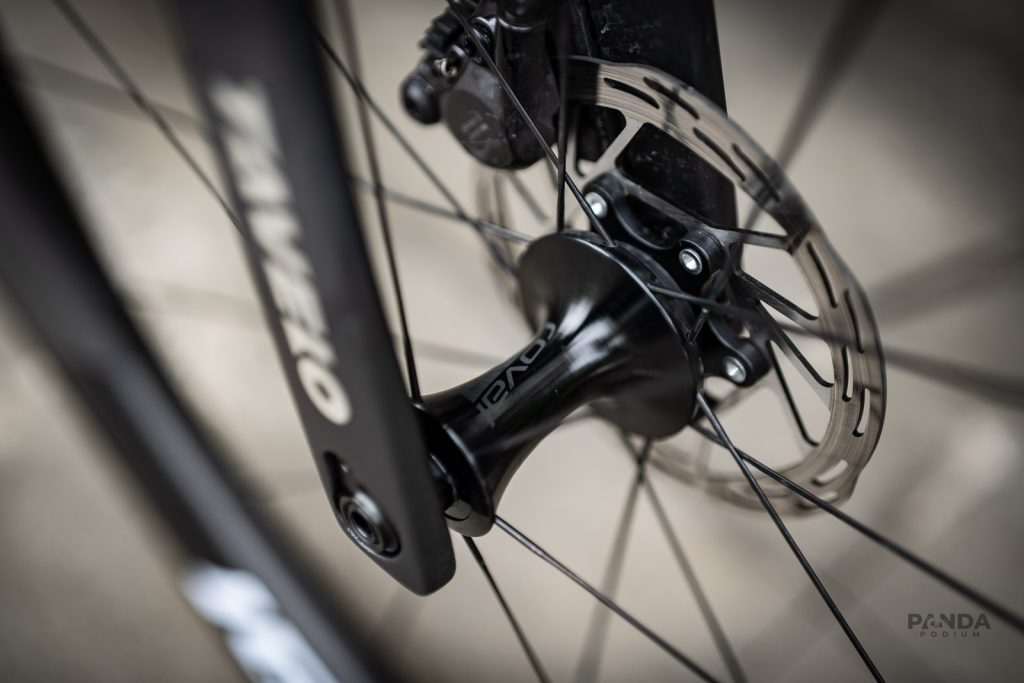
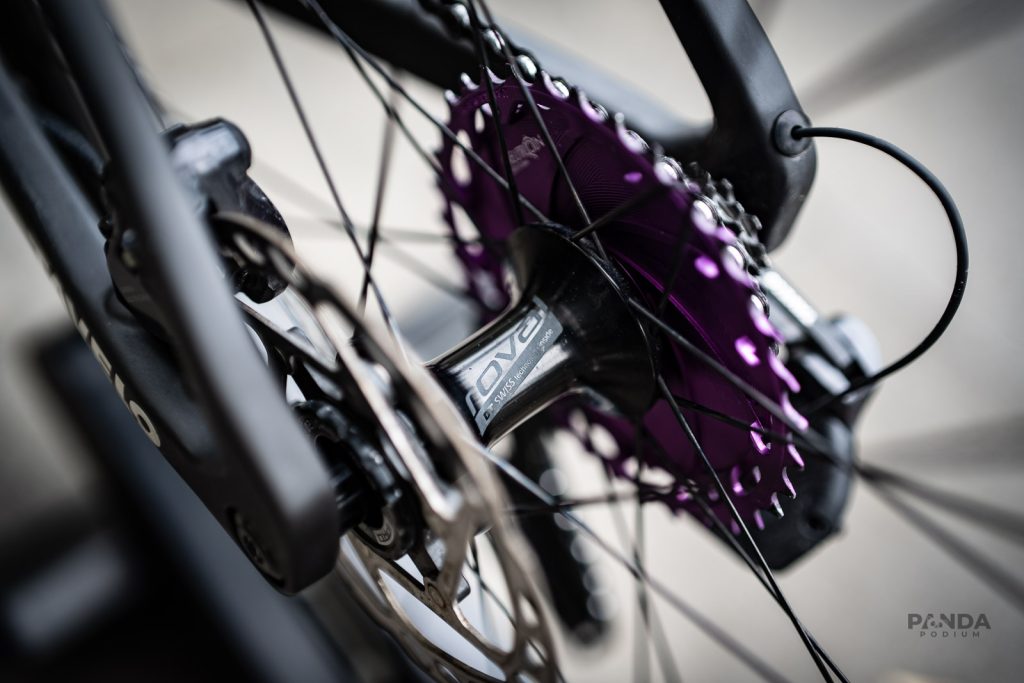
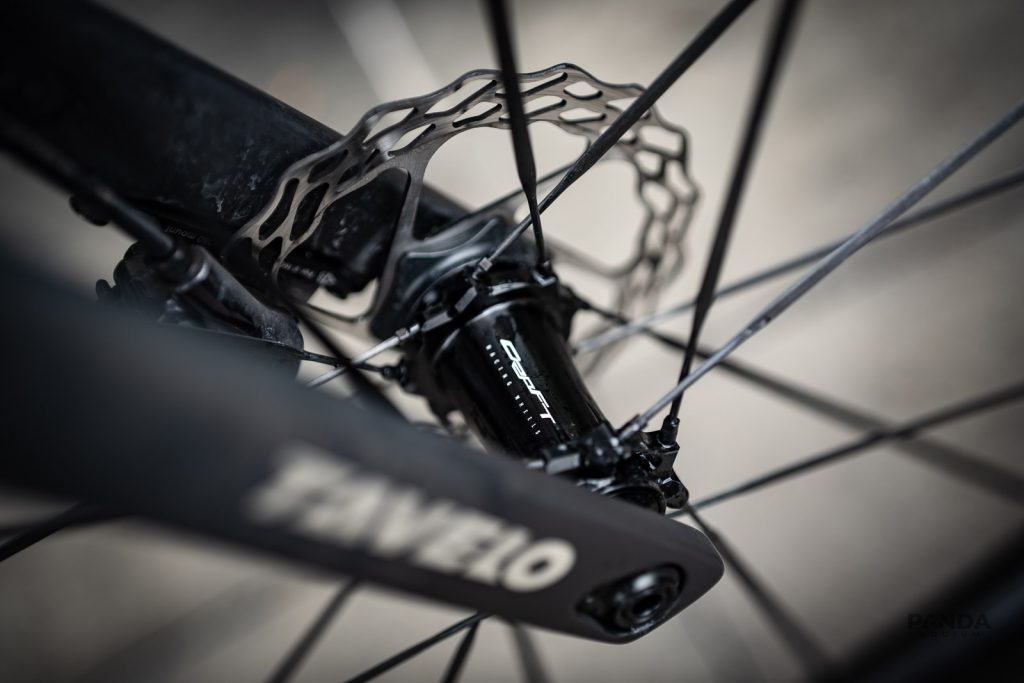
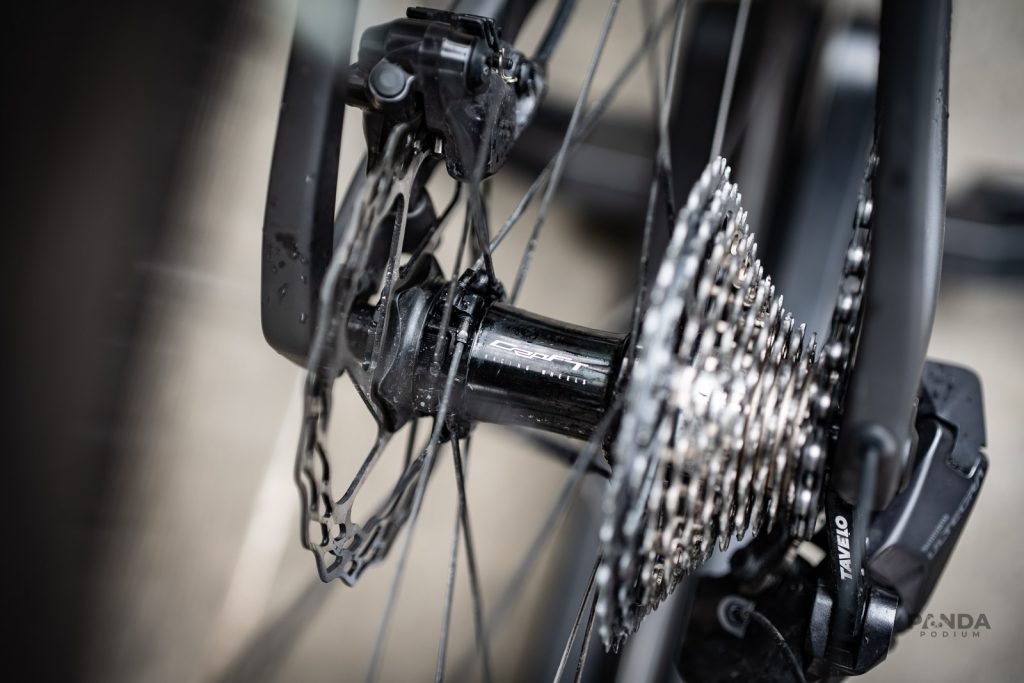
The Roval’s hubs use the tried and tested internals of the DT Swis 180 series of hubs. The outside of the hub shell uses what Specialized call their Aeroflange design. The premise of this design is that the hub shell is as narrow as possible in the center for aero gains, while flaring out at the flanges (for better spoke angles and a stiffer wheel.) The CRWs on the other hand have weight savings as their main focus of design. Their form is dictated by the best weight to strength ratio. There’s some extra machining for weight reduction and removal of a few grams of material. While the CRW’s hubs internals are their own design, they lean heavily on the DT Swis design (since the original patent has expired.) Anyone familiar with the internals of a DT Swis hub will find themselves at home when they take apart the CRW hub. One note of credit to both companies is their following of Shimano’s standards for both brake rotor and cassette freebody locations. During testing, wheels were swapped interchangeably with no adjusting of the brakes or rear dereleiur needed. Kudos to both companies. One common criticism of the Rovals that can be found online is the bearings seem very draggy when not preloaded. One Specialized dealer described it to me “as if they use peanut butter for grease.” This does seem to get better when the wheels are installed in the bike (and bearings therefore preloaded.) CRW are not without criticism. Early batches featured end caps that were undersized leading to ‘clicking’ sounds coming from hubs. These issues have seemingly since been addressed, but needless to say hubs are a critical part of a wheelset that nobody seems to have perfected yet. Both wheels come as standard with a 10 degree engagement angle via a 36T ratchet ring. More than enough for road riding.
Spokes
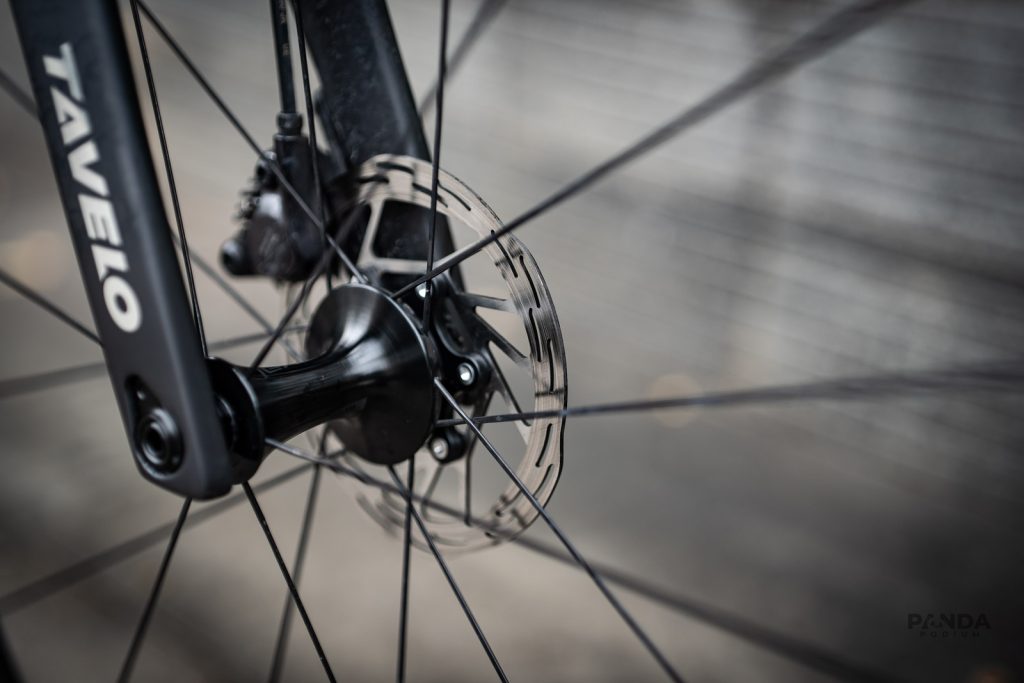
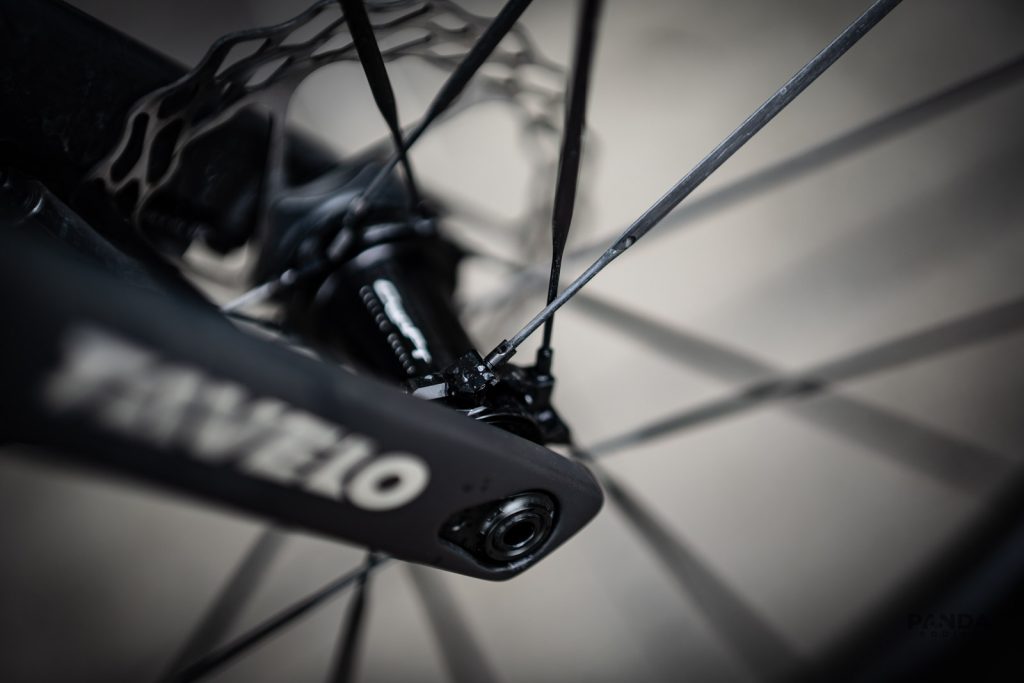
One major difference between the two wheelsets is the spokes. CRW built the whole wheel around the concept of carbon spokes, whereas the Rovals are built using DT Swis steel spokes. Whether Roval chose these spokes because they’re the best spokes for the job, or it was part of the licensing deal to use the DT Swis internals; who knows. However, the advantages of carbon spokes are clear to see. Lighter spokes with a higher tensile strength and less elasticity, in theory leading to a wheelset that is lighter and stiffer like-for-like. On the horizon we have the release of the Roval Rapide CLX II Team version – a version of these wheels, but with carbon spokes. Roval recently released a similar product for their XC wheels and as time of writing this article, have been seen in testing, but are not yet released to the public.
Price
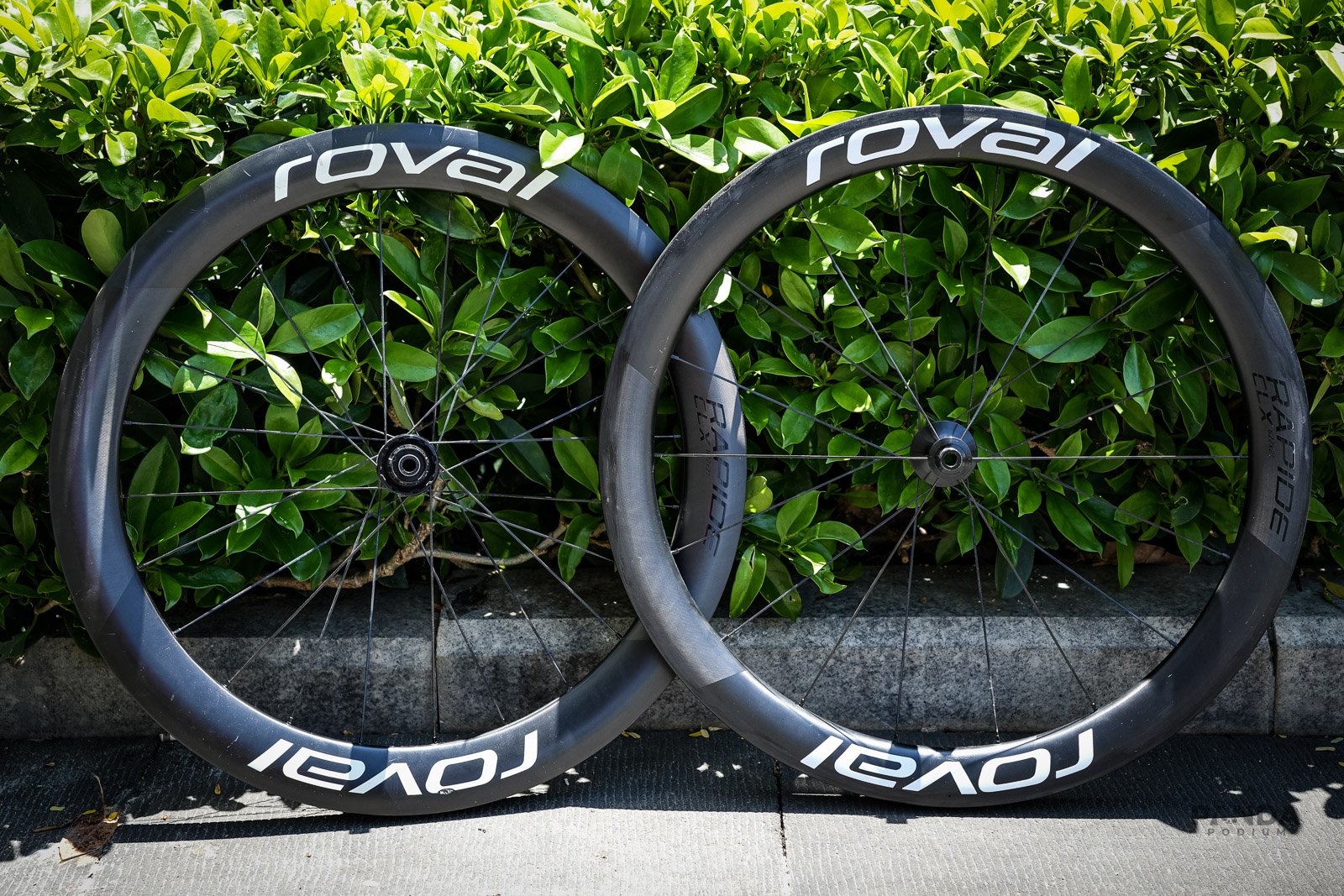
Of course price is a key component in most people’s choice when buying a new wheelset. Prices can vary by market and sales, etc. But, the RRP of the CRW CS5060 is currently $1680 on PandaPodium.cc with free worldwide shipping. The Rovals are listed for sale on Specialized’s website with an RRP of $2800 for the pair. That makes the Rovals about 66% more expensive than the CRWs… not an insignificant amount.
Warranty
In most countries Roval seems to offer a lifetime warranty on the wheels to the original owner, and free crash replacement for the first two years if you’re inside the USA and have registered your wheels at the time of purchase. More details can be found here, and be sure to check your particular territory. Meanwhile the CRWs come with a two year warranty and no crash replacement warranty, although CRW will sell you replacement parts such as a new rim for $380. While a two-year warranty should be enough for most people (anything thats going to go wrong should go wrong within the first two years…), the Rovals are the clear winner here.
Ride Feeling
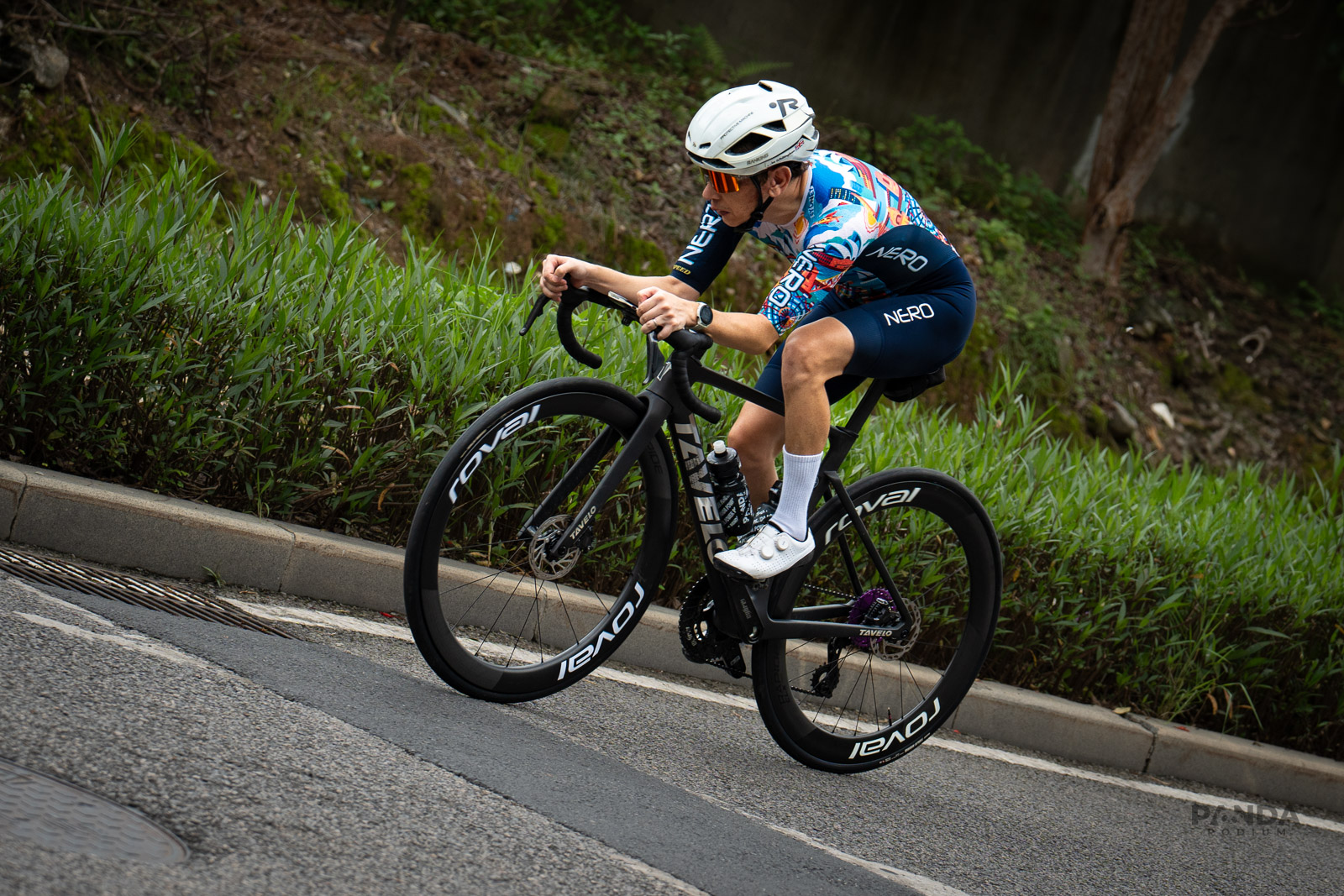
While this section is mostly subjective, at the end of the day how a wheelset feels is a big part of the package for many riders. Ride feeling, and which feeling you prefer, will vary based on your weight, your power, the roads you ride, the bike the wheels are on, tire pressures, etc. Speaking as a 53kg rider with around ~230watts FTP who likes climbing, I can share my opinions. Both wheels are great to ride. Coming from the stock wheels on most bikes, either option will be a great upgrade. The biggest difference between the two wheels are in weight and stability. The >200g advantage of the CRWs is noticeable when pulling away from every traffic light, when attacking from the bunch, or when slogging up a steep climb. The CRWs also seem to do a better job of absorbing bad road surfaces. A lower spoke count and a more compliant rim are probably helping in this area. However, when the road gets twisty, the Rovals come into their own. Don’t get me wrong, the CRWs corner just fine, but the Rovals are on another level in terms of stability and inspiring confidence. At this point I’ve tested around 50 wheelsets, and the Rovals have the best handling of any disc brake wheelset I’ve tested. I’m not sure if it’s down to the balanced spoke tension, the wide shoulders on the front rim, the large hub flanges, the stiff rim, or a combination of all of the above, but the Rovals inspire extra confidence in you when tackling a descent. In summary… CRW for the climbs, Rovals for the descents.
Summary
| All scores out of 10 | Roval Rapide CLX II | CRW CS5060 | Reason |
| Acceleration | 7 | 9 | Over 200g of difference in weight that has to be “spun up” along with carbon spokes providing a snappier acceleration feeling. |
| Climbing | 8 | 10 | Lighter is always going to climb better, but both wheels climb fantastic for such deep profile rims. |
Handling (cornering, braking) | 10 | 9 | While the CRWs aren’t as laterally stiff as the Rovals, the torsional stiffness feels much better due to more spokes handling braking forces on the front wheel, and carbon spokes lack of elasticity for force transmission.) Still, the Rovals hold a corner slightly better than the CRWs. |
| Aero Speed | 10 | 10 | Both wheels are within less than 1% of each other in our aero tests. Both very fast for this depth of wheel. |
| Aero Stability | 10 | 9 | It’s hard to say whether the Roval’s stability comes from their aero profile or their heavier rim leading to a higher gyroscopic effect, either way, the Rovals are slightly more stable in crosswinds. |
| Warranty | 9 | 7 | With a life-time warranty and Specialized dealers seemingly in every city, the Rovals get a great after-sales service. |
| Value | 7 | 9 | Value is relative, and neither wheelset can be considered ‘cheap’. However, the over $1000 difference in price could be used to buy several upgrades in other areas of your bike. |
| Total | 61 / 70 | 63 / 70 |
While the importance of each of the above aspects may carry different weight to different people (200g of climbing weight matters less if you’re a 90kg rider as opposed to 50kg) the above are my personal opinions. In my scoring, the CRWs just take the edge. Interestingly, if money is no object (and we disregard the value scores) then both wheelsets score the same. However, if money truly is no object, then you likely don’t care about warranty, in which case, the CRWs take the edge again.
The weight advantage of the CRWs cannot be overlooked. They’re a mere 25g heavier than Roval’s Alpinist CLX II wheels; a super shallow, narrow, climbing wheel. Yet, as seen in the above tests, they have the same aero performance of the Roval Rapide CLX II.
The Rovals however are also a great wheelset. It’s obvious that lots of care and attention went into their development. The minor details such as the balance of stiffness is very impressive. Their long list of victories on the pro scene are evidently no fluke.
Customer Reviews
Both the Specialized Website and PandaPodium allow customers to leave reviews. At time of writing, these are the customer reviews. Of course, customer reviews should be taken with a pinch of salt, as most of the happy customers won’t leave comments, but customers with less-than-perfect experiences will feel compelled to leave reviews. Also, these sample sizes are tiny. Roval has probably shipped tens of thousands of these wheels, but only has 7 customer reviews on their website.
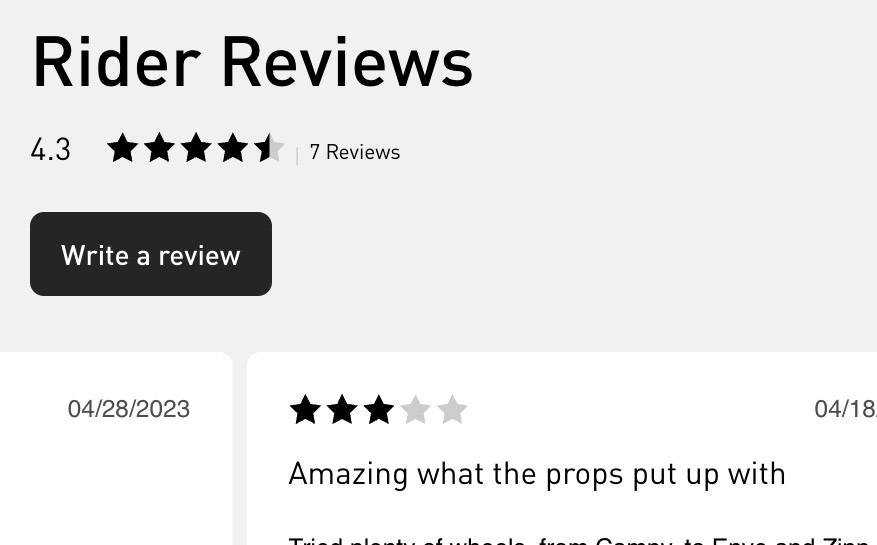
Roval Rapide CLX II - 4.3 stars (7 Reviews)
Link to product page – scroll down to reviews at the bottom.
Which should you buy?
Read the above and make up your own mind. I’m not here to convince you of anything. If you’ve made it this far in the article, you’re clearly capable of thinking and making your own decision. Both wheelsets offer pros and cons. I can’t imagine anybody serious about speed being disappointed by either wheelset.
LINK to the CRW CS5060s on Panda Podium
^ Click to buy
Other wheels in the CRW CS Range:
-
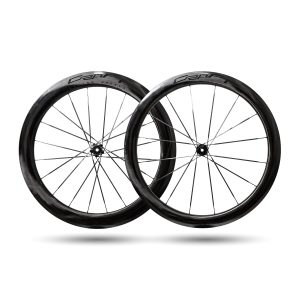 Select options This product has multiple variants. The options may be chosen on the product pageWheels Tires & Tubes, Wheelsets
Select options This product has multiple variants. The options may be chosen on the product pageWheels Tires & Tubes, WheelsetsCRW Works CS5060 Disc Brake Wheelset
$1,680.00 – $1,710.00Price range: $1,680.00 through $1,710.004.44 out of 5 -
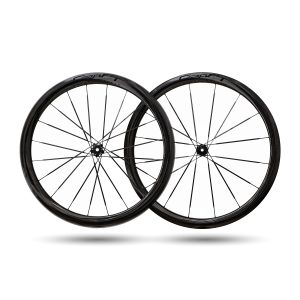 Select options This product has multiple variants. The options may be chosen on the product pageWheels Tires & Tubes, Wheelsets
Select options This product has multiple variants. The options may be chosen on the product pageWheels Tires & Tubes, WheelsetsCRW Works CS4045 Road Disc Brake Wheelset
$1,680.00 – $1,710.00Price range: $1,680.00 through $1,710.005.00 out of 5 -
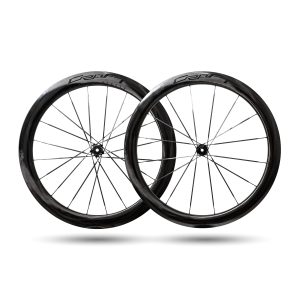 Select options This product has multiple variants. The options may be chosen on the product pageWheels Tires & Tubes, Wheelsets
Select options This product has multiple variants. The options may be chosen on the product pageWheels Tires & Tubes, WheelsetsCRW Works CS5055 Road Disc Brake Wheelset
$1,680.00 – $1,750.00Price range: $1,680.00 through $1,750.004.82 out of 5 -
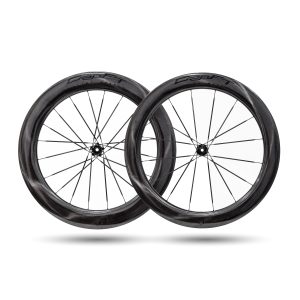 Select options This product has multiple variants. The options may be chosen on the product pageWheels Tires & Tubes, Wheelsets
Select options This product has multiple variants. The options may be chosen on the product pageWheels Tires & Tubes, WheelsetsCRW Works CS6575 Disc Brake Wheelset
$1,680.00 – $1,750.00Price range: $1,680.00 through $1,750.005.00 out of 5
Disclaimers & Background
I am not an engineer. I am not an expert. I merely have lots of experience with around 50 sets of carbon wheels and a passion for analyzing and testing things. All opinions above are my own personal opinions. Of course, as a retailer of CRW wheels there is a huge conflict of interest, however I hope the methodology above is transparent enough for people to make up their own minds. As biased as I may be, the weights of both wheelsets are clear for all to see and to do their own testing, etc. While I have a business relationship with CRW, I also have a personal relationship with several Specialized employees. I have been to both companies’ headquarters and signed NDAs, all of the information in this analysis is in the public domain and doesn’t infringe on any NDA. If either brand has a correction to offer or spots a mistake in this article, feel free to contact me and I’ll update it ASAP.
Roval Rapide CLX II Team
JUST as I’m putting the finishing touches on this article, Roval announces the Team edition of these wheels, *sigh*. While I think my article is still worth publishing, its hard to now claim that the “regular” CLX II is the “best” western wheel. For those wondering, the CLX II Team shaves 130g off the regular version (1360g now… still 70g heavier than the CRW CS5060) but the wheels still feature DT Swis steel spokes. They’re now using the 2nd generation of the spokes, which seems to have given them a claimed 0.5 watt increase in the wind tunnel. Their hub seems less aero than before (although hub aero is very marginal gains) so if I had to guess, I’d say the new spokes are actually worth more than 0.5watts, and they’re losing a little bit of aero on the new hubs. Everyone was expecting these new wheels to have carbon spokes, but it seems they’re being reserved for a later product (I guess the CLX III – which I assume will have new rims optimized perhaps for 30mm tires… we shall see. Roval…or Chris Wehan if you’re reading… why not send over a pair for a new comparison test. 🙂
Author
Founder and CEO of Panda Podium. British expat living in China for 15 years. Love anything with wheels that goes fast. Mainly riding road bikes. Enjoy a good gravel ride too, but slow down to 10kph at the mere sign of loose sand. Still have huge love for rim brakes and alloy frames...







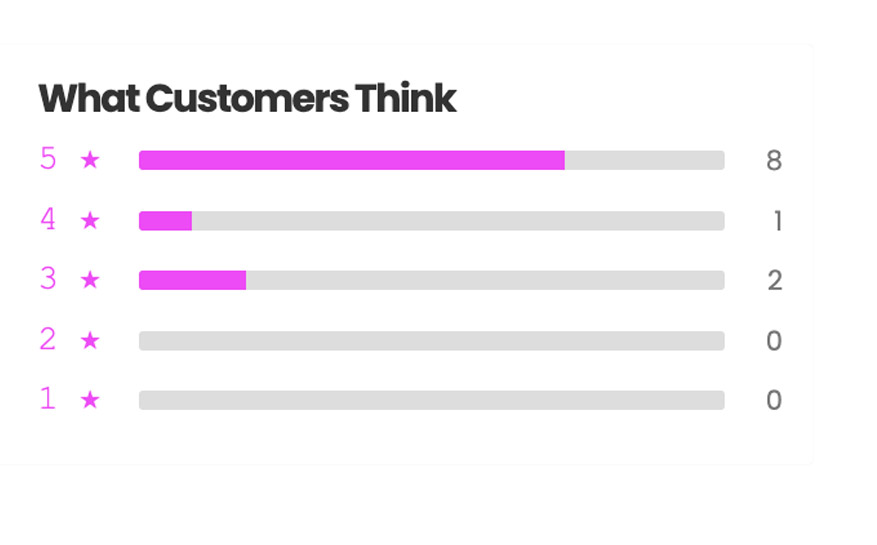
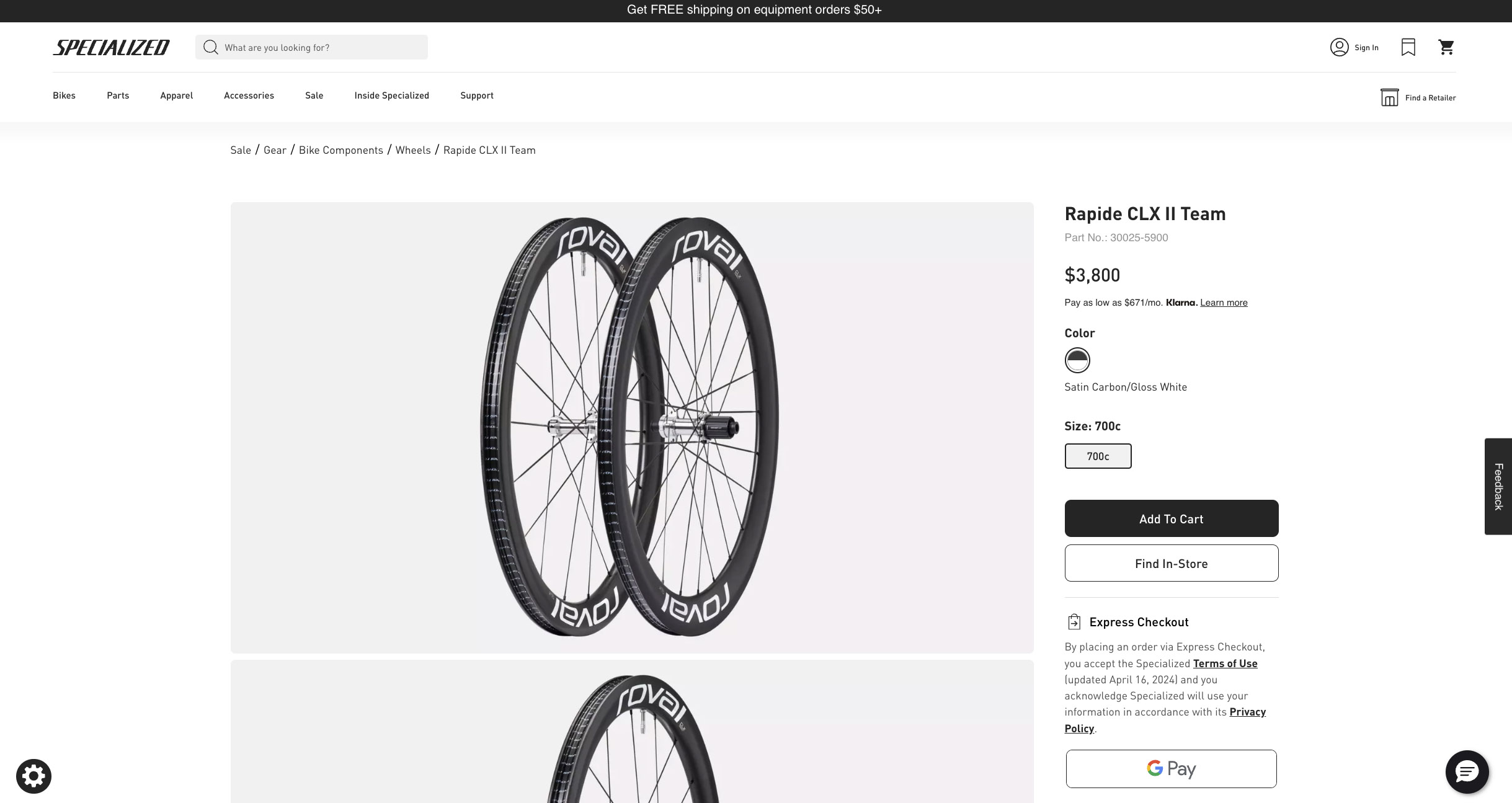

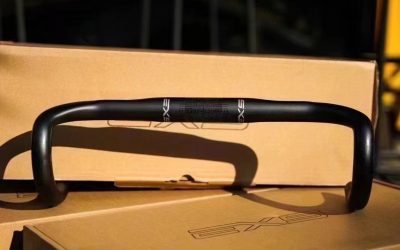
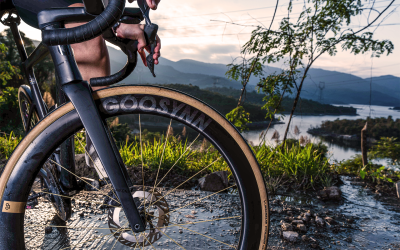
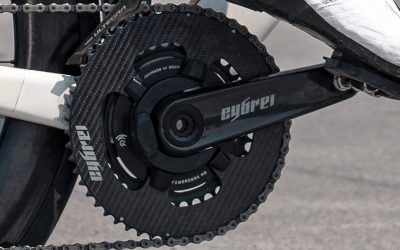

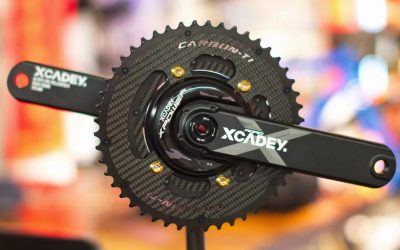
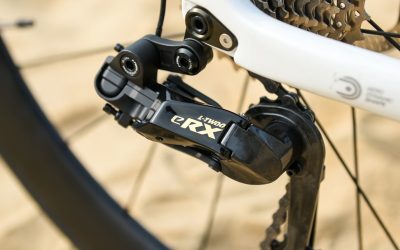
Leave a Reply
You must be logged in to post a comment.